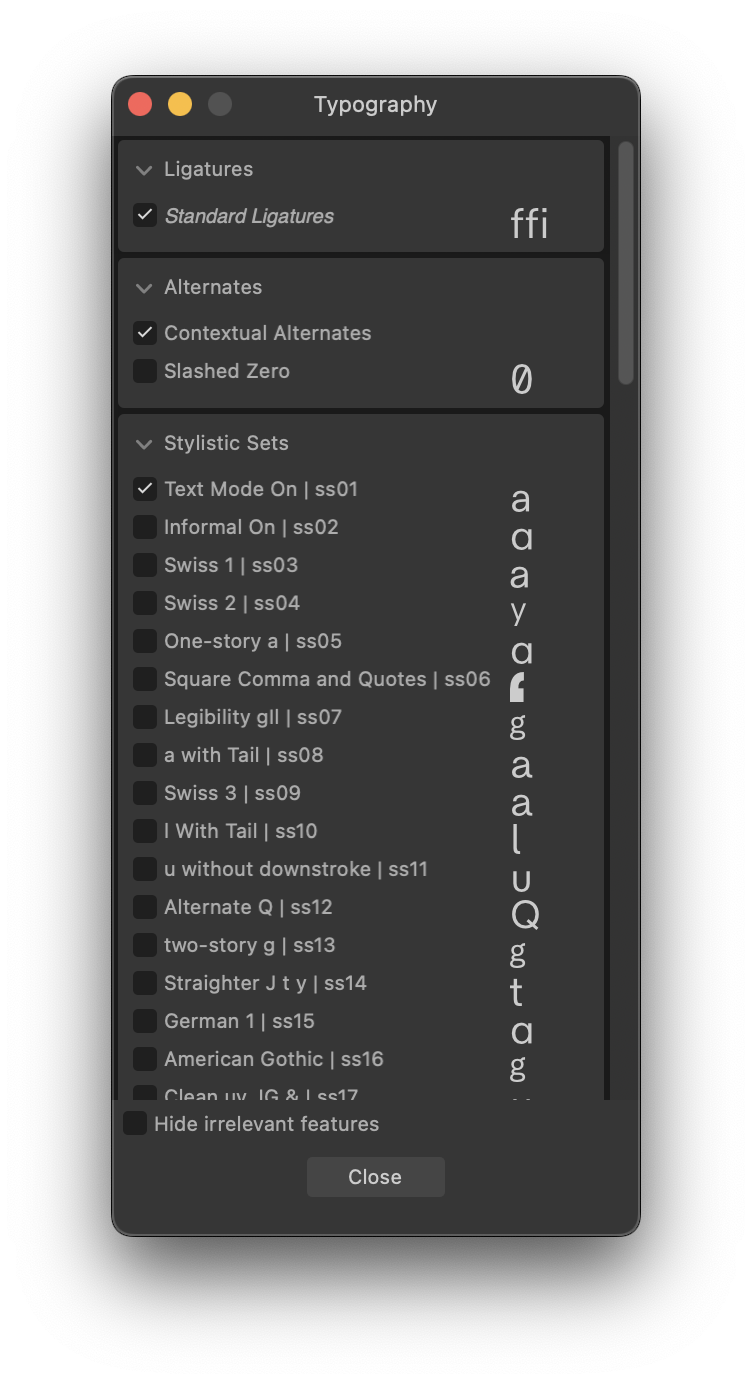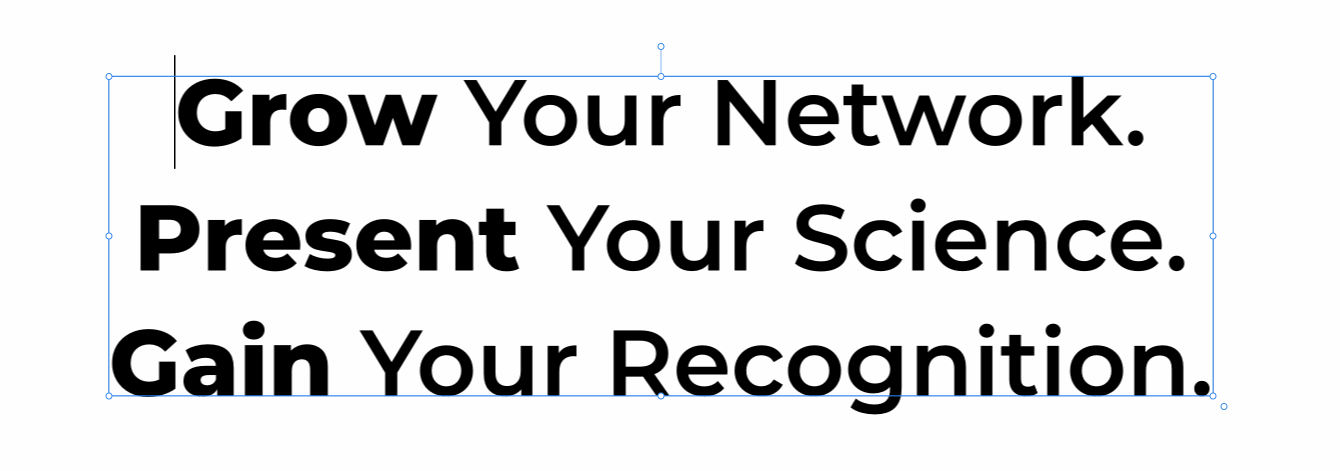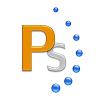Search the Community
Showing results for 'variable fonts'.
Found 17,257 results
-
Three more books from my collection. The leftmost one is a printing textbook from 1904 by Charles Thomas Jacobi. It has the original owner's name and date on the frontspiece as Nov. 1906. The middle is an undated, Cerlox-bound handout from Domtar, and the rightmost is a small 1968 book from Howard & Smith Monotype. It has a subtitle inside: A Guide to Better Typographic Communication. I get great joy holding a book that is 120 years old, knowing that before me others opened it, read it, examined the images, and learned from it. I much prefer actual books to a website, although I have used them to help identify fonts and found many to be very informative. My last two versions of CorelDraw came with What The Font access built in. It was very handy when I had to replicate a face for a client's new work and they had no idea what had been used. In large part I prefer the printed version because I like to read and own books, and to refer to them at my leisure, not merely when I am online. I read a lot these days (two-four hours most days). At night I read in bed for at least an hour and will often choose books from my library like this to reread or look for content related to come project or study. That's how I found these three: looking for something else I recalled from my library I hoped might help with a project I am working on. I also sometimes pick up old books from yard sales or library discards and examine them for their type and layout. I have several shelves of books from the mid-1800s to the 1930s (as well as a few thousand song sheets from about 1880 to 1940). Mostly I keep them because I like to examine the typography, rather than to actually read them (well, most of the songsheets are for playing music on my ukuleles...). To my wife's annoyance, I once rescued an entire set of encyclopedias from the 1940s just because they were so beautifully set and laid out (you can see some pages here).
-
EPS Export query
lacerto replied to Gigatronix Pete's topic in Affinity on Desktop Questions (macOS and Windows)
Your customers might have expected specifically Illustrator EPS files which retain native Illustrator elements and full editability in Illustrator. Affinity apps cannot create such EPS files but only standard EPS files with some limitations (e.g. fonts are converted to outlines, and spot colors and overprint settings are not exported). Standard EPS files also do not retain layer structure of the document, and their editability is very limited. Illustrator should be able to open such files, though, so check what your customers mean when they say that they cannot open the files in Illustrator. Also, open the exported EPS files using your Affinity app to ensure that they are not corrupted. Exporting using PDF format (or SVG, if it is a question about RGB mode documents) might work as alternative formats if EPS files simply just do not work. You could also try if exporting using PostScript level 2 works better (but it is unlikely that this could be the cause of the problem). -

Missing font
kenmcd replied to AvdB-Netherlands's topic in Affinity on Desktop Questions (macOS and Windows)
ACaslonPro-Italic and Adobe Caslon Pro are probably old conversions from PostScript Type 1 fonts (or actually are old Type 1 fonts). And thus have limited character sets and features. So you can use Find & Replace to permanently replace those fonts with the other Caslon fonts you do have. -
Ich habe ebenfalls keine Probleme mit dem Dokument in Version 2.4.0. System: Win 11 Pro Wie @walt.farrell habe ich ebenfalls nicht die verwendeteten Fonts oder verlinkten Ressourcen. I also have no problems with the document in version 2.4.0 System: Win 11 Pro Like @walt.farrell i also do not have the fonts or linked ressources.
-
Barcode fonts have been around for ages and there are a number of them floating around if you do a search. One example: https://graphicore.github.io/librebarcode/
- 38 replies
-
- qr generator
- qr code
-
(and 1 more)
Tagged with:
-
Lovely to see this - did you look at being able to create a global variable for every slice to share? Currently the slice variable is per slice instance, it's much more useful to have a global token such as the name of a product and use it in every slice, the document name works around this as the file can be named after the product but isn't as flexible as a global slice name variable.
-
In another thread in Questions, I have been discussing with others how to write a macro that will resize an image so that the longest side is a fixed value. For example, if I resize a 4000x3000 image to maximum of 800, it will give a 800x600 image. For a portrait image, the image will become 600X800. After many iterations, I came up with a set of macros included here in a macro library: Resize to fixed max size.afmacros, which is attached here. This includes five macros: Resize to 640 max Resize to 800 max Resize to 1280 max Resize to 1600 max Resize to variable max side The first four will resize any image to the designated maximum size. The last one includes a parameter which allows you to partly-specify the target size. The default target size is 2000px, but for any other value (up to a maximum of 4000, use the pop-up to adjust. The value of the parameter is the desired maximum size divided by 4000. A convenient way of specifying the final maximum edge size is to enter a fraction. If your target is (say) 800px then, in the parameter box (not the slider), enter 800/4000. If your target is 3200, enter 3200/4000. I have given technical details of the macro in subsequent messages in this thread. EDIT: This is a revised version of the macros (as of 2nd November 2018). For details of the changes, see the item below which gives the macro details). The changes were in response to a user who found that if he cropped the image first, the macro did not work. Resize to fixed maximum size.afmacros
-

Apple font "SF Pro" doesn't render correct
thedzko replied to PepGold's topic in V2 Bugs found on macOS
Do you happen to have a link to any of those, I've trying to find the static versions with no luck! I hope Affinity gets support for these types of font soon! It's getting pretty annoying having to use a third-party app (like Slice) in order to remake every variable font weight needed in a project! Especially this font now, it has 25 predetermined weights, that's a lot of work! -
For 1D barcodes, yes, and barcode fonts are the traditional solution for this. For 2D barcodes (QR codes and the like), no.
- 38 replies
-
- qr generator
- qr code
-
(and 1 more)
Tagged with:
-
That's right, always put the letter first, then the combining diacritical mark. Just a thought, I know that the character that looks something like a circumflex accent that is on the same keyboard key as a figure 6 on at least the English keyboard is not the combining circumflex. I am not immediately knowing whether there is or is not some character that might look like a combining macron but is not. The reason I mention this is that I think that the "going rate" for these combining diacritical marks is that they have zero advance width in the font so that they "have a go" at producing a reasonable attempt at an accented character straight off, though unless it is a monospaced font, then results can be variable, from good through reasonable to poor, though nevertheless conveying meaning. So the result that @Alfred got first seems strange to me if that is the combining macron. There is a collection of Combining Diacritical Marks as they are called. https://www.unicode.org/charts/PDF/U0300.pdf William
-
'PDF' is a container file format, it may contain a range of various object / file types, e.g. text, vector, image, video, audio, fonts, interactive elements… If you insert a PDF via menu "File" > "Place" inside an APub text frame it gets placed as a pinned object, nested in the text frame layer. Depending on its size and pinning options for scaling + position it may not show directly within the text frame once it got inserted but may require modified settings. As a pinned object it will flow with the text, e.g. between columns or linked text frames. – Nevertheless, its text will not be editable with this workflow. If you want to insert text as editable object in Affinity you can either … • Open a PDF (not 'place'). • Place a PDF as embedded, then press "Edit Document" in the "Context Toolbar". • Place a text file (.txt, .rtf, docx, …). • Copy/paste text via the computer's clipboard.
-
Variable fonts support
Stepaan replied to Athanasius Pernath's topic in Feedback for the Affinity V2 Suite of Products
For me, the price or boycotting Adobe isn't the issue. I simply love working in Affinity Suite, and whenever I can, I start new business using Affinity. Just because its very pleasant workflow... But lack of the Variable Font support becomes a problem increasingly since many clients use them in their designs. -

Variable fonts support
kenmcd replied to Athanasius Pernath's topic in Feedback for the Affinity V2 Suite of Products
Yes, they do. On my phone at the moment, but later I can provide the link to the exact variable font file they served to my up-to-date Firefox on Windows. (which is the Latin-extended sub-set variable font) You should be able to determine the exact file you were served by looking at the network tab in the developer tools. Note: don't know what browser you are using, but regarding variable font support, Safari on macOS has been the worst (based on the number of issues in the GF tracker). It appears on MacOS 14 that Safari may have finally fixed this. Point: if you are using Safari it is quite likely GF could serve a static font, and definitely on the older versions. -
In small point sizes aliased text (earlier achieved with bitmap [system] fonts of different sizes) typically works much better than antialiased vector-based type rasterized real-time. When looked at certain distance, the human brain (appropriately limited eyesight) creates the best possible combination of accuracy and smoothening of edges. This has become less necessary in the event of high-res (4K) displays, but the feature is still quite useful in situations DPI is less than optimal.
-
Libertinus v7.4.0 does still have an error in the SemiBold Italic font. So I fixed that and exported the fonts to TTF with hinting (for screen display). Libertinus.v7.040.TTF-Fixed.Names.zip Linux Libertine (family) has been fixed for LibreOffice. (I guess they finally got tired of shipping broken fonts.) Linux.Libertine.Family.v5.3.0-Fixed.Names.zip The Linux Libertine fonts were not fixed due to some licensing issues. They could not get all of the original contributors to sign-off on the license update. You can see old discussions about this in the LibreOffice bug tracker. This is also why they are not updated and included in Google Fonts. Again, you can see related discussions in the Google Fonts Issues tracker. This is also why the family was forked and renamed to Libertinus. Unfortunately Libertinus also suffers from some neglect. Libertinus also removed some features (e.g. nalt). All of these fonts are very old. The G fonts are the original Graphite fonts. The O fonts were conversions to OpenType-PS. There are far more capable free OFL fonts available. Fixed fonts are not going to fix the errors in existing PDFs. But, it can prevent errors in the future. So you may still have import issues. Make sure to shut all applications down when un-installing the old fonts and then installing the new fixed fonts - you want all the font caches to update properly. Not sure why you have odd PostScript Names embedded for Libertinus. Nothing in the fonts would explain that. Have to see the original docs and PDFs. Note: I have no problem exporting your ODT file above from LibreOffice. The correct fonts PostScript Names are embedded. (unlike the odd names in your PDF above) Affinity-Test.KM.exported.from.LO.pdf It may be that you have too many different versions installed. Also check that you do not have duplicate font files in your Windows Fonts folder and your User Fonts folder (look for duplicate files with a filename suffix like _0, _1, etc.). That can confuse the Affinity font caching.
-
In my experience non-antialiased rendering of text works identically in any app that supports the feature. I have tested so far Photoshop, GIMP, CorelPHOTO-PAINT (both Windows and macOS), and Acorn. All these apps also can fetch hinted versions of glyphs (e.g. TrueType hints for 2 and 5 for LiSu), but more generally: they do non-antialiased rendering identically for any fonts I have tested, whether hinted or not, whether TrueTypes or PostScript based outlines. Affinity apps basically just turn on all antialiased pixels above certain threshold: ...and here is how it is done in Acorn (and PS, CorelPHOTO-PAINT and GIMP, and...): antialiasing_off_acorn.mp4
-
My intent with my threads is to make Affinity apps have the best darn support for all fonts! I have had the privilege to make videos and written tutorials on the offical FontLab Channel and website, teaching thousands of font designers. I want to teach font designers to use Affinity Apps and make great fonts for your apps! ----------------------------------- As I'm making fonts and trying them in Affinity, I'm finding a certain problem. Alternate characters don't work correctly. Currently, I am reporting this on a case by case basis. Case by case is not optimal. First, I'm probably missing many problems. Second, scattered problem reporting doesn't fix the underlying problem. -------------------------------- There are essentially two main processes that make fonts work. Font Renderer The renderer takes the vector outlines and turns them into pixels. Rendering can be visualized thus: Different operating systems and programs have different renderers. Microsoft uses ClearType (the example above). Apple uses Quartz. Adobe apps and Acrobat Reader use a proprietary rendering. I'm not sure what renderer Affinity uses. (Or if it uses the default Microsoft or Apple system renderers.) The renderer of Affinity seems to work fine. 👍 However Affinity has problems with the next process. Font Interpreting (Text Shaping) This does something entirely different. The confusingly named interpreter (or text shaper) reads the feature code. For example, it reads this code from the font designer: and changes it to this panel in Affinity: Text shaping is the process of converting Unicode text to glyph indices and positions. The specification which it reads can be found here https://learn.microsoft.com/en-us/typography/opentype/spec/ The feature file specification is found here: http://adobe-type-tools.github.io/afdko/OpenTypeFeatureFileSpecification.html Interpreter Problems in Affinity In Affinity GPOS LookType 8 doesn't work correctly. Also, GSUB LookupType 6 doesn't work correctly. If you look at this page there are many more types of "Lookups". I have not tested all of these. The basic ones seem to work. The more complex ones might not. ---------------------------- What Interpreter Does Affinity Use? Not sure what interpreter Affinity uses. However, as shown above, it doesn't seem to be working correctly. If it is a custom solution, it seems like it would be difficult to update. What Would Be a Good Interpreter? A good interpreter would be: Widely used Updated on a regular basis Open source Easy to implement Widely Used If you think about programming languages, when something is widely used AND widely used by large companies, it seems to stay around. Harfbuzz seems to be widely used. It is used by these UI libraries (source😞 GNOME (GTK+ KDE (Qt) ChomeOS PlayStation 4 Android Java Flutter It is used directly in these apps: Chromium Firefox LibreOffice Scribus Inkscape Adobe Photoshop Adobe inDesign (requires script to enable) Why Frequent Update? Opentype is continually being developed, with frequent new versions. Unicode is updated every year. If the feature interpreter doesn't get updated frequently, the app won't be able correctly use the newest fonts. Harfbuzz seems to be updated frequently. There is an active community here: https://github.com/harfbuzz Open Source? Not sure. The license is found here https://github.com/harfbuzz/harfbuzz/blob/main/COPYING It seems to have originally been open source. It seems like there is attribution involved and some individual files have copyright notices. Easy to Implement? I don't know if Harfbuzz is easy to implement. I don't know much on the technical side of fonts. I'm not connected in the font world as well as I want. However, I communicate on a regular basis with FontLab's Adam Twardoch. He originated Variable Fonts. He has been working on font technology since the early 90s. I also know Laurence Penny, a founding member of MyFonts.com. He is also the proprietor of some websites for font developers, including this one for variable fonts. Between those people, I know that they could find someone to help you implement a solution like this. Or maybe any questions can be asked directly to the font people on Harfbuzz's GitHub. Also, there might be other solutions out there. Thank you for reading! Dave Lawrence, California Type Foundry
-
I'm not seeing any issues here... Are you using a static version of your font rather than a variable version?
-
thanks for the answers... Im at a very frustrated point right now... please read the forum, many people have this issues since V2 with lagging or randomly freezings by simply using fonts or the tools. On windows systems and also with apple... only with V2 apps... So it is maybe a structural problem and of how the apps were programmed. I am using windows 10 and windows 11, intel based systems right now with fastest retina settings, without Open CL. But it is no difference with it... I already tried all the solutions and Tips here incl reinstall, reset the apps or deactivate the Open CL and so on... nothing helped . The apps starting very slow (over 30s to 1min.), I get randomly freezes and/or "not responding"s by using fonts and have to wait around 10 to 30 sec to work again or it is randomly lagging and not responding by using tools... I finally want to know when the problem will be adressed and fixed???
-
Not quite the same. In Photoshop for example upon trying to open a document you get a notification that you have to click [OK] before the document will finish opening. Then once you do open the file, the layers with missing fonts provide notifications at the point of edit. If you double click on one of those triangle notices you get this: The reason I think missing fonts need to be more in your face about things is just the other day, while multitasking, I opened a document the customer sent, apparently missed the brief warning in the upper right corner, made a couple changes and exported the image and uploaded it to a website. I had no idea some of the fonts changed compared to what was in their own system. The customer wondered why I had changed fonts. Another thing Photoshop does that Affinity doesn't seem to be doing is presenting a pixel layer image of the original font layer, even if the font isn't available on the system. So you can see what the original file is supposed to look like and if you do edit with a substitution font you see it change. In Affinity, I had no idea that layers I never touched had a cursive look and Affinity had automatically substituted Arial or something upon opening.
-
I always thought a ligature was a tourniquet, quelle surprise As I understand it, ligatures as a default are on, exporting to pdf subsetting fonts is the default Surely most folk, bearing in mind that this is a low cost program that attracts non-professionals, won't understand or want to get involved in this stuff so ligatures as a default should be off then clever people that want them can turn them on and know enough to embed the complete font? I had a quick play using Calibri which seems to be one of the worst culprits. It's trivial to turn off the ligatures in the base style as long as one is aware.
-

Following making a pdf chaos has followed
Hangman replied to Rufus Reade's topic in V2 Bugs found on Windows
Hi @Rufus Reade and welcome to the forums, This sounds as though you've opened and are attempting to edit the PDF document in Publisher rather than the original Publisher file itself, is that the case? When exporting your file to PDF uncheck the Subset Fonts checkbox just below the Embed Fonts Dropdown in the Advanced section and see if that maintains your ligatures correctly when the PDF is opened in Publisher...






















